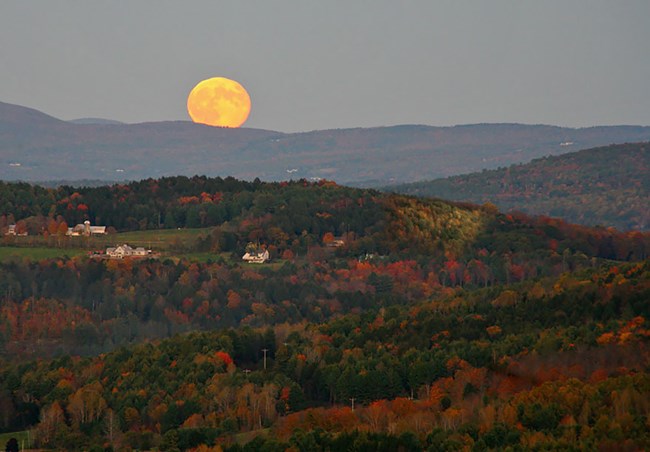Last updated: May 8, 2023
Article
Enjoy the View Like Ed Sharron

How do you enjoy the view?
The Enjoy the View Like Us series invites National Park Service employees to share their stories about their favorite park views. The ways to enjoy the view are as unique as parks and their visitors. We hope these stories inspire you to enjoy the view! Learn more about scenic views in national parks.

“It’s great to share the view with park visitors, friends, and family as the hike to the view scores high on my self-created effort-to-reward ratio.”
This is how Ed Sharron describes the view from South Peak on Mount Tom in Vermont's Marsh-Billings-Rockefeller National Historical Park.
Ed is a science communication specialist for the Inventory and Monitoring Northeast Temperate Network. Before he started his current role in 2009, he was an interpretive park ranger for about 10 years in several parks including Voyageurs NP in Minnesota, Montana's Glacier National Park, and of course Marsh- Billings-Rockefeller National Historical Park in Vermont where he connected with one of his favorite views.
What makes this view so special?
This view is special to Ed for many reasons. He shares that “It was the one of my earliest park views as a first-time park ranger back in 1999(!).” It also has conservation significance. “The view of sweeping, rounded, forest-covered hills that fade into the distance wasn’t what was visible 150 years ago."


When park namesake, conservationist, and environmental writer George Perkins Marsh (b.1801, Woodstock VT) first peered over the hills as a youth from here he may have had a similar view. But by the time he reached his mid-40’s, most of the trees had been felled due in large part to ‘merino mania,’ a sheep-wool craze that swept the state, along with large-scale logging, culminating in Vermont becoming about 80% deforestation by the mid-to-late 1800’s. Marsh observed the ill-effects of this large-scale deforestation including increased flooding, erosion, degraded fish and wildlife habitat, and even changes to local climate. His experiences led to him giving a speech in Rutland, VT in 1847 where he was one of the earliest voices calling out about human-induced climate change.”
Ed’s favorite quote from this speech is:
“But though man cannot at his pleasure command the rain and the sunshine, the wind and frost and snow... it is certain that climate itself has in many instances been gradually changed and ameliorated or deteriorated by human action.”

What should visitors know?
There are several ways to access the incredible panoramic view of Woodstock from the South Peak of Mount Tom, including gentle grade carriage roads (hiking or horseback riding only), and steep, switchback-laden trails. All have their own character and worthwhile exploring when visiting the park.
Check out the Marsh-Billings-Rockefeller National Historical Park hiking trails page for more information.
